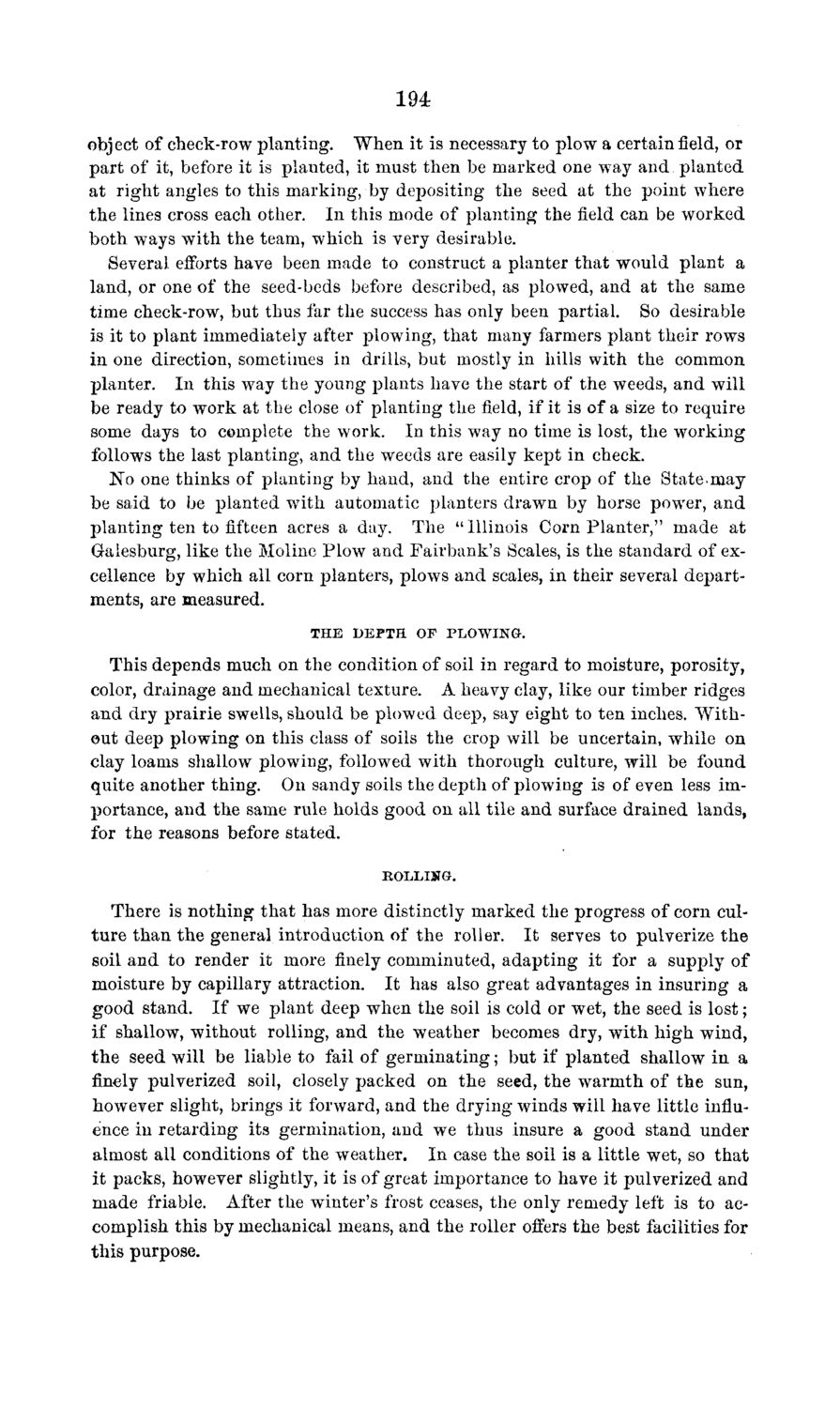| |
| |
Caption: Board of Trustees Minutes - 1869
This is a reduced-resolution page image for fast online browsing.

EXTRACTED TEXT FROM PAGE:
194: object of check-row planting. When it is necessary to plow a certain field, or part of it, before it is planted, it must then be marked one way and planted at right angles to this marking, by depositing the seed at the point where the lines cross each other. In this mode of planting the field can be worked both ways with the team, which is very desirable. Several efforts have been made to construct a planter that would plant a land, or one of the seed-beds before described, as plowed, and at the same time check-row, but thus far the success has only been partial. So desirable is it to plant immediately after plowing, that many farmers plant their rows in one direction, sometimes in drills, but mostly in hills with the common planter. In this way the young plants have the start of the weeds, and will be ready to work at the close of planting the field, if it is of a size to require some days to complete the work. In this way no time is lost, the working follows the last planting, and the weeds are easily kept in check. No one thinks of planting by hand, and the entire crop of the State.may be said to be planted with automatic planters drawn by horse power, and planting ten to fifteen acres a day. The "Illinois Corn Planter," made at Galesburg, like the Moline Plow and Fairbank's Scales, is the standard of excellence by which all corn planters, plows and scales, in their several departments, are measured. THE DEPTH OF PLOWING. This depends much on the condition of soil in regard to moisture, porosity, color, drainage and mechanical texture. A heavy clay, like our timber ridges and dry prairie swells, should be plowed deep, say eight to ten inches. Without deep plowing on this class of soils the crop will be uncertain, while on clay loams shallow plowing, followed with thorough culture, will be found quite another thing. On sandy soils the depth of plowing is of even less importance, and the same rule holds good on all tile and surface drained lands, for the reasons before stated. ROLLING. There is nothing t h a t has more distinctly marked the progress of corn culture than the general introduction of the roller. I t serves to pulverize t h e soil and to render it more finely comminuted, adapting it for a supply of moisture by capillary attraction. It has also great advantages in insuring a good stand. If we plant deep when the soil is cold or wet, the seed is lost; if shallow, without rolling, and the weather becomes dry, w i t h high wind, t h e seed will be liable to fail of germinating; but if planted shallow in a finely pulverized soil, closely packed on the seed, the warmth of the sun, however slight, brings it forward, and the drying winds will have little influence in retarding its germination, and we thus insure a good stand under almost all conditions of the weather. In case the soil is a little wet, so that it packs, however slightly, it is of great importance to have it pulverized and made friable. After the winter's frost ceases, the only remedy left is to accomplish this by mechanical means, and the roller offers the best facilities for this purpose.
| |